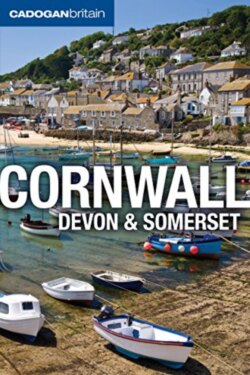Читать книгу Great Book of Spoon Carving Patterns - Joseph Fullman - Страница 22
На сайте Литреса книга снята с продажи.
03 Cultural Identity
ОглавлениеThe closer to the Atlantic you get, the stronger the Southwest’s sense of cultural identity becomes. Cornwall has the clearest and most pronounced view of its own uniqueness, born of its strong Celtic roots. In the Dark Ages this was one of the principal enclaves for Romano Britons holding out against Anglo-Saxon incursions, and, despite grudgingly becoming part of England in the 10th century, it managed to maintain its own language and a largely separate culture throughout the Middle Ages and into the early modern period. Today, however, it could be argued that much of what made the county culturally distinct has faded away. The Cornish language died out in the 18th century, specific local crafts have been replaced by ubiquitous trades, the mighty tin-making industry – for centuries the basis of local political power – has crumbled, while the population, once made up almost entirely of people born in the county (a situation maintained for centuries by the region’s notoriously poor roads) is now a mixture of locals and migrants from other parts of the country and beyond.
And yet, despite (or perhaps because of) this gradual watering down of the traditional Cornish way of life, recent years have seen a pronounced surge in regional identity, with many people proclaiming a new sense of pride in their Celtic roots. The striking St Piran’s flags – a white cross on a black background – flies from homes across the region. Attempts are being made to revive the long dormant Cornish tongue, albeit on nowhere near the scale that has taken place in Wales. The Celtic nationalist party, Mebyon Kernow (literally ‘sons of Cornwall’), which campaigns for greater Cornish autonomy, attracts widespread support in the county, and there are a good number of people here calling for the county to have its own regional assembly along the lines of those operating in Britain’s other Celtic heartlands of Scotland and Wales. Some even argue for total independence.
The sense of regional identity is less clear cut elsewhere in the region. There are no pressure groups campaigning for Devonian or Somersetonian independence. But then, these counties never had their own languages and were opened up to the wider world much earlier than their more westerly neighbour, and are more clearly and more obviously English. Still, you’ll find plenty of people here who are very proud of their heritage and highly vocal about their regional attachments. This often takes the form of a general Southwestern affiliation or a pronounced civic pride – identifying themselves closely with local towns and cities, such as Bath, Bristol or Exeter, rather than the county as a whole.
Ask anyone outside the Southwest to characterize the culture here and you’ll no doubt hear the usual clichés about cider-drinking, surfing and combine-harvester riding. But there is no one Southwest identity, rather a myriad different ways of life: rural, urban, traditional, modern, that change and evolve with the passing decades, and together make up an endlessly fascinating whole.
